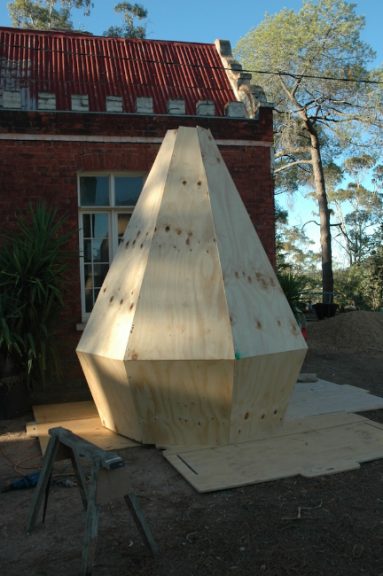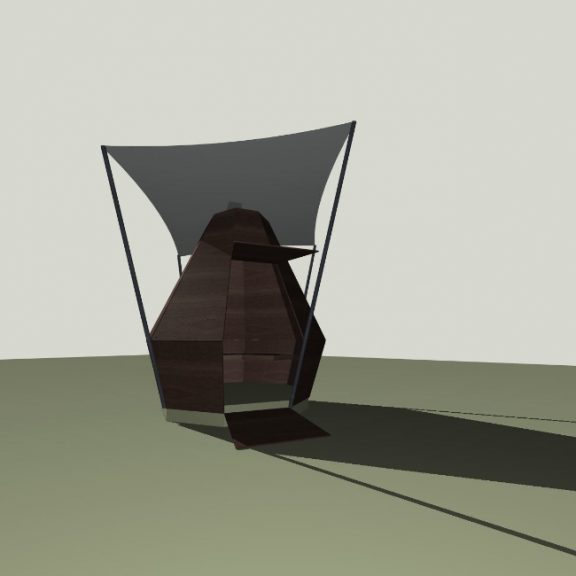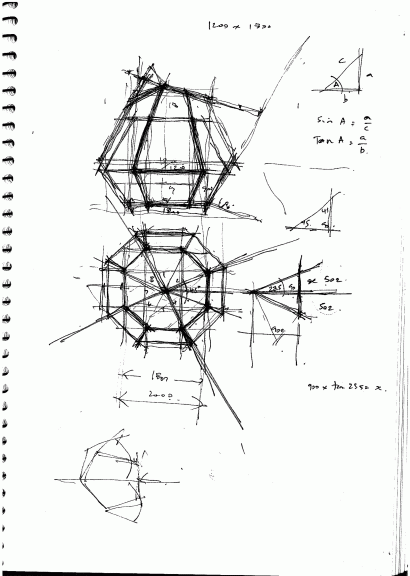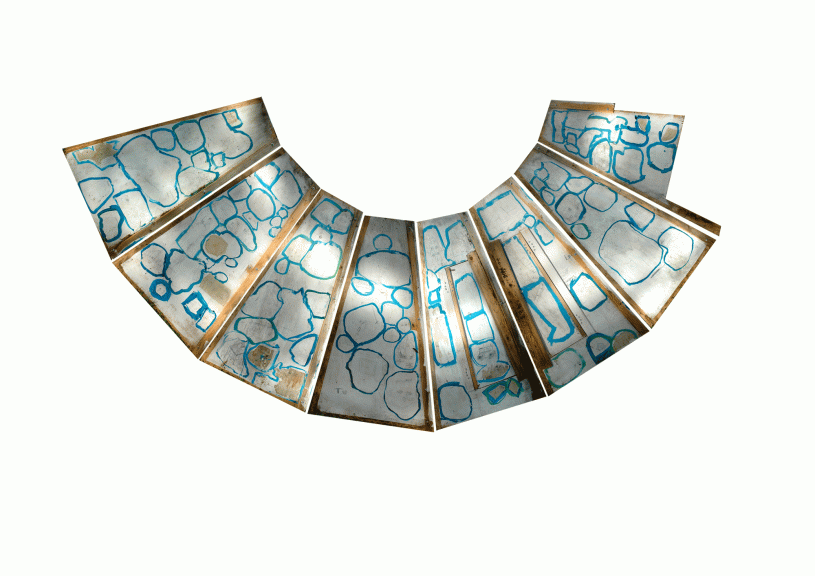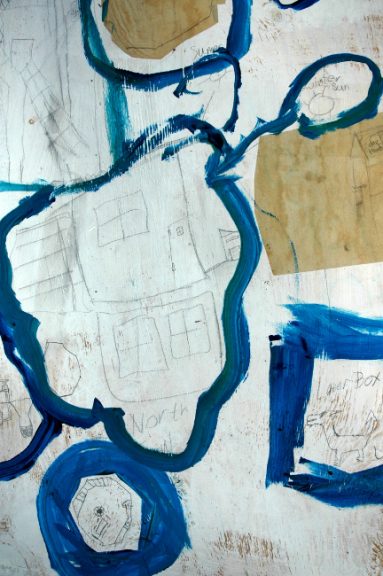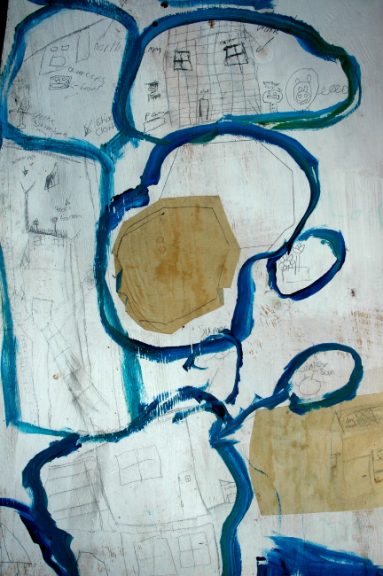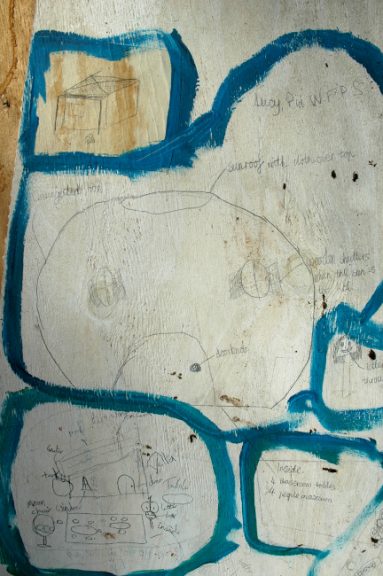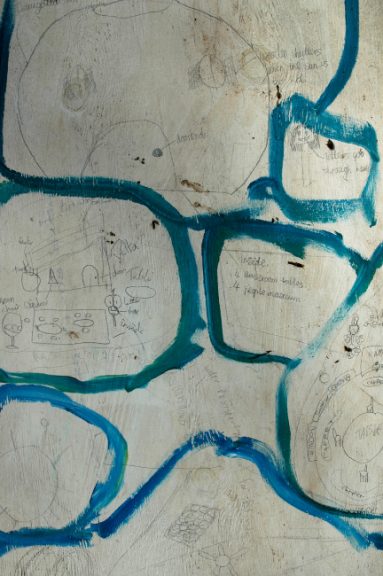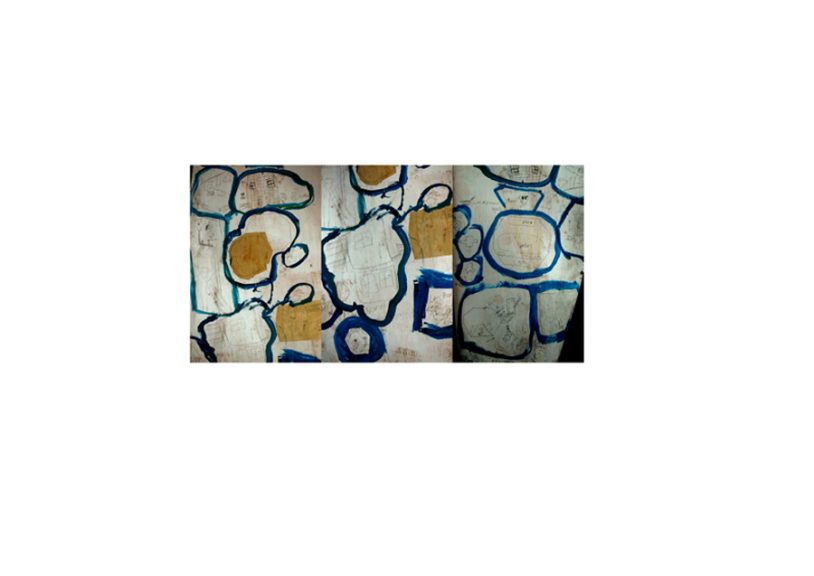ECO Cubby for Kids
Designed for the Castlemaine State Festival 2009 this Eco Cubby was used as an eduction tool for primary school children to elaborate principals of sustainable habitation during workshops held during the festival. The following is a copy of the text that could be used in lessons with kids in Primary school engaged in designing an Eco Cubby.
Steps to Sustainability
What is a sustainable building?
You could say there are three levels to thinking about this:
1. harmless
Something that does no harm to the enviroment
How do buildings do harm?
By taking stuff from the environment; materials, energy
By putting un-useful or harmful things back into the environment; waste, leftovers
By having to be repaired, rebuilt, not built to last
How can we make buildings that are harmless?
Make them to last, use materials that don’t need looking after or that can be re-used or re-cycled
Be clever find ways of doing things that haven’t been done before
Re-find ways that have been done for 1000’s of years
Design them so they don’t need energy- use the energy of the sun.
2. helpful
Something that has a positive effect on the environment
How can a building help the environment?
By using materials that would otherwise be chucked out (put in the tip)
By making more energy from the environment than they need
By collecting water and helping things grow around them (or on them)
By restoring a place that has been degraded
3. inspiring
Something that teaches and inspires others
How can a building make people want to do things better, or make them realise they can do better?
Design that is clever and simple (I can do that! I understand that, why haven’t we done that before?)
Make it beautiful (what does that mean in a building?)
Five Lessons
5 simple lessons for teachers to deliver to Grade 5 students based on the concept of a house as a healthy body. Students can apply the concepts of harmless, helpful and inspiring listed above to each of the lessons.
Lesson 1
Strong, Sustainable Bones – Positioning and aligning the body
Can you see the bones in your body?
No but they give you shape.
What would we look like without our bones?
They make you upright.
But a pile of bones is not a body, they need to be tied together and brought into shape, tendons and muscles do this.
What does this mean when thinking about a building
Lesson 2
The Skin – How to protect you and the environment.
What does your skin do?
It keeps you warm and cool
What does the skin of a building do?
It is a barrier; provides privacy, it keeps the rain out
It keeps the heat out in the hot, it keeps the heat in in the cold.
What can the skin be made of?
Think of things that would be chucked out normally (see attached examples)
What is the difference between a roof and a wall?
Lesson 3
The eyes, nose, mouth – Helping your home to breathe healthily
The skin is a barrier but it has to open and close, how can we do this?
Are doors and windows the only way?
Do you need to see out? How do you get in?
Can a whole wall open up?
How can the sun heat the building in winter but not make it hot in summer?
Hot air rises; can you use this fact to cool the building?
Lesson 4
Healthy environment around the home
A building when it is put in a place, changes that place
It creates shade on the south
It provides a place out of the wind
Sometimes it is better to be outside a building than inside
A building can be part inside part outside
Lesson 5
How does your home feel? – Designing your home
What are some shapes a building could take?
What do these shapes mean to us?
Should a house look like a ‘house’?
What about colours?
What about shade, is it gloomy or cosy?
Bright and light, is this clean and crisp or cold and stark?
